Instead of curtains
Let's start with one of the traditional - but not yet for our country - way of window decoration. Our compatriots are accustomed to using tulle as an addition to blackout curtains: this combination has remained the most popular for many years. Tulle hides from prying eyes, as well makes the room cozy.
The method in question is brilliant in its simplicity: lightweight veil fits perfectly into any modern style... This is a particularly good solution for small spaces with a lack of natural light. Tulle frames the window opening, making it complete, and at the same time does not obstruct the sun's rays.
With pickup
This method of window decoration is suitable for romantic natures - lovers of picturesque folds, which are collected using a decorative holder on one side of the window. The design is asymmetrical and gives the interior dynamics, at the same time making it more graceful. Convenient magnetic materials can handle weightless matter. pickups, as well as any fabric and wicker accessories.
In addition to the aesthetic function, this technique plays a utilitarian role: the assembled tulle allows you to freely open and close a window or balcony door without touching light matter. It also removes excess tissue by increasing the amount of penetrating light.
Two colors
A solution for bright personalities who seek to focus on the design of the window opening. This technique works great where the view from the window leaves much to be desired: a colored veil or organza draws attention to itself, making the interior different from others.
Translucent fabric in vibrant, muted colors brings a festive vibe to the room. Different types of fabrics can be combined and hung in 2 layers.
Restrained combinations of classic white tulle with fabric of a natural palette - beige, gray, peach will look great in any interior. Curtains of the same color as the walls can serve as a continuation, creating an enveloping interior.
Try to match the colored curtains with other textiles, furniture, or accent pieces, as in the second photo. Here, the white fabric serves as a background and mutes the saturation of the hue.
Simple fold
This method is very easy to perform: the curtain, assembled closer to the center with the help of hairpins or tape, becomes like a glass. On the one hand, the window looks solemn and elegant, and on the other hand, it gives the room airiness, softens clear lines, and visually changes the proportions of the room.
Interesting solution - fix the tulle so that a lush fabric flower is formed at the assembly point. Experiment with your translucent curtains to see if the fabric is suitable for the decor.
Complicated drapery
This design method is able to enlarge a small window and give it an unusual look. Tulle is hung in two layers along the entire length of the cornice, then fastened with hooks, creating symmetrical folds on two different sides.
Having two tulle curtains and suitable attachments to the cornice, you can try this technique now. Clamps or rings should be at the same distance from each other (about 10-15 cm). An ordinary tape or piece of fabric will serve as pickups. When looking at the window opening, guests will think that the designer has worked on the design.
Advice! Be sure to consider the style of the interior: modern tends to be laconic and functional, so the folds in it will look foreign. In classic interiors, everything is different, and drapery will add sophistication to the atmosphere.
For all windows
A great option for those who own a room with two or more window openings. Fasten the curtain rod along the entire length of the wall and hang the sheer white tulle covering the walls. Thanks to this technique, you will create the illusion of panoramic windows: the light will diffuse, optically increasing the space.
A separate small curtain on each window simplifies and reduces the cost of the interior. Depending on the desired depth and frequency of folds, the width of the curtain fabric should be 2-3 times wider than the wall.
Over thick curtains
Such layering is another non-trivial option for decorating a window, because we are used to seeing curtains that are located on top of the tulle, and not vice versa. With the help of a veil, you can easily balance the strict look of the curtains, giving the room a lightness and airiness.
The translucent material seems to muffle dark curtains, dissolving them in space, while leaving the opportunity to block too bright sunlight or create a private atmosphere. In this design, tulle with embroidery, patterns and floral ornaments is appropriate. The background for them should be monochromatic.
Experiment with tulle for an eye-catching design that doesn't have to be a skilled craftsman.

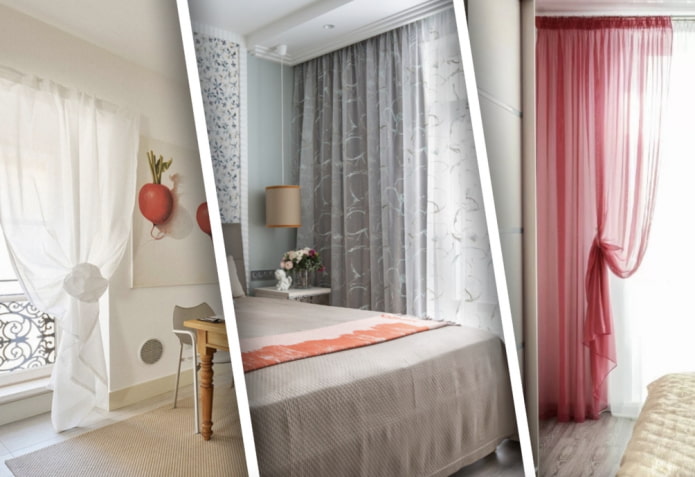
 10 practical tips for arranging a small kitchen in the country
10 practical tips for arranging a small kitchen in the country
 12 simple ideas for a small garden that will make it visually spacious
12 simple ideas for a small garden that will make it visually spacious
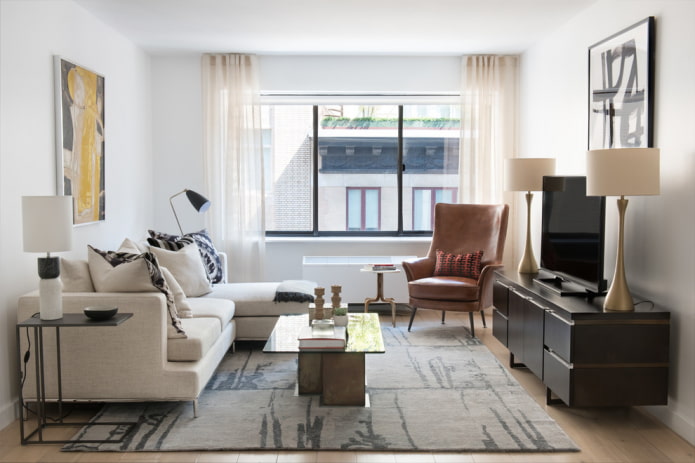
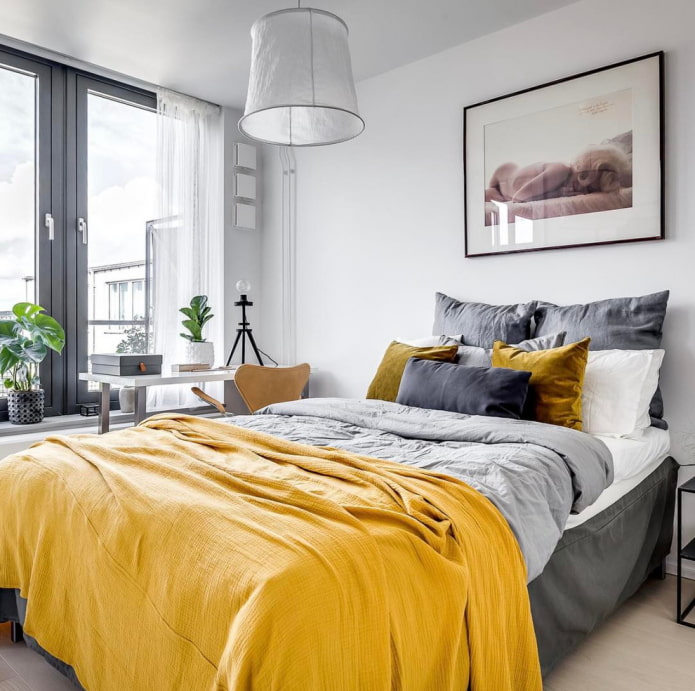
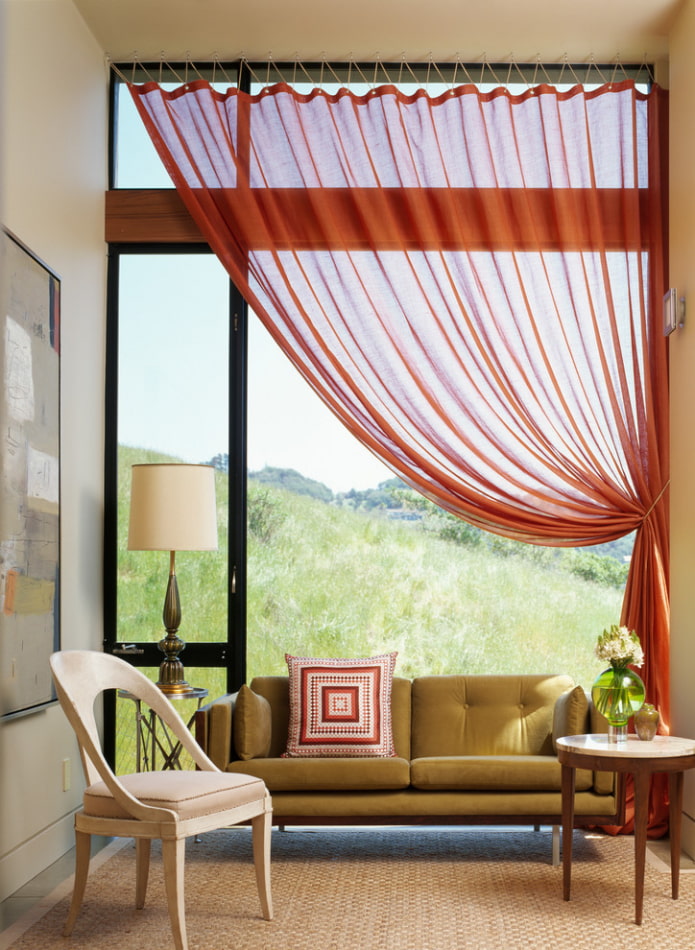
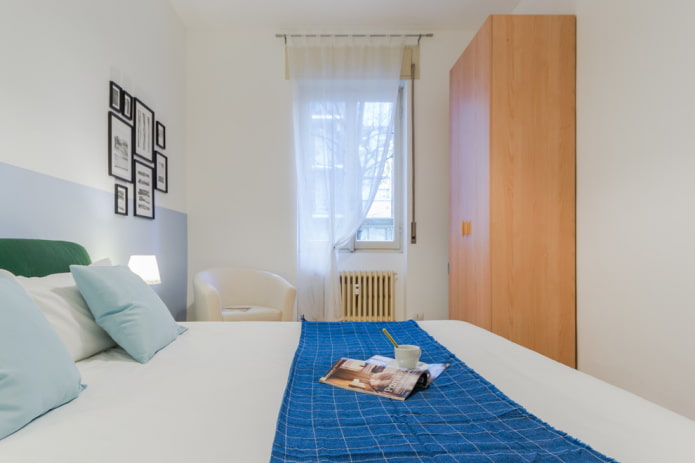
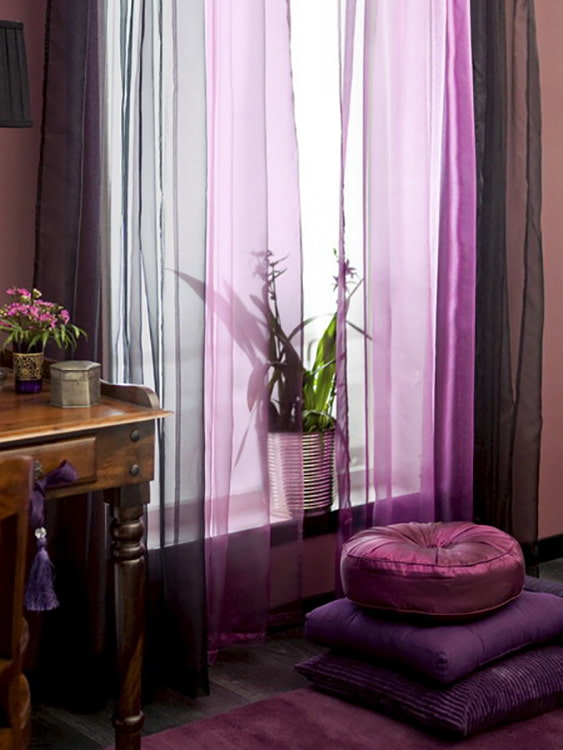
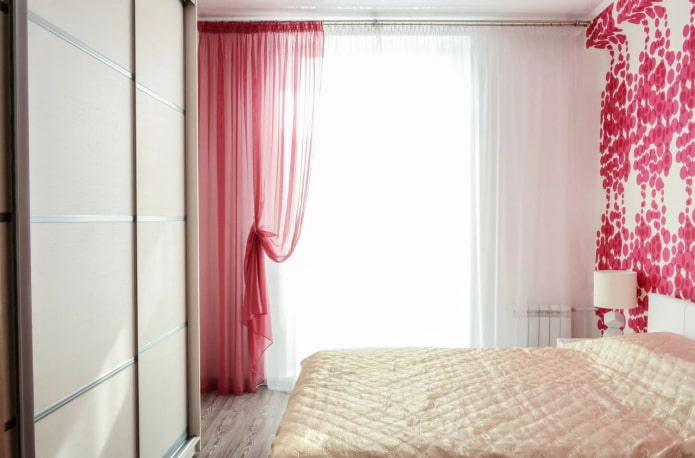
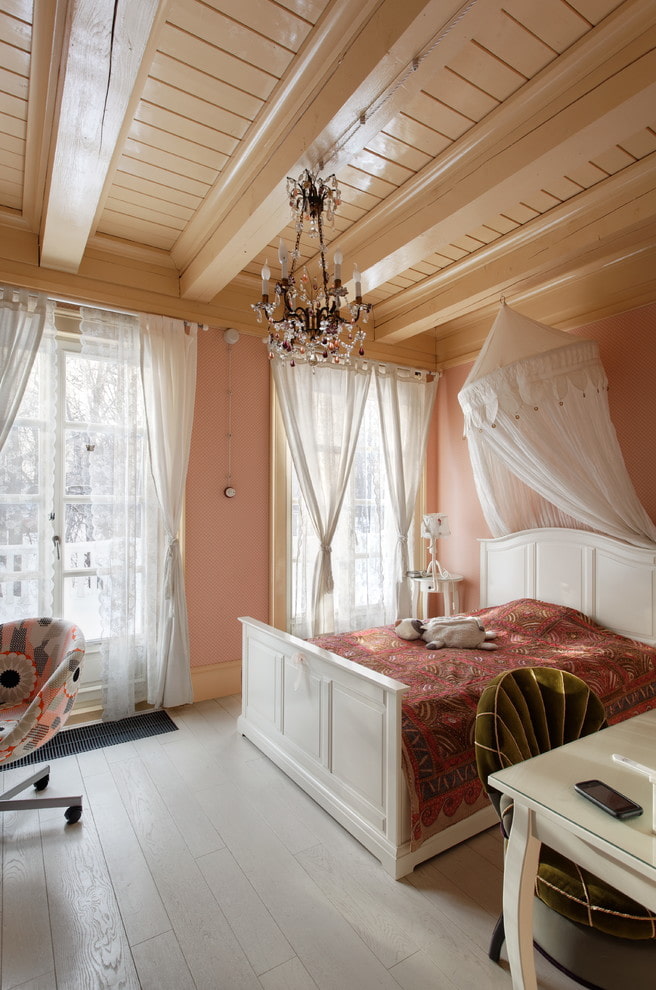

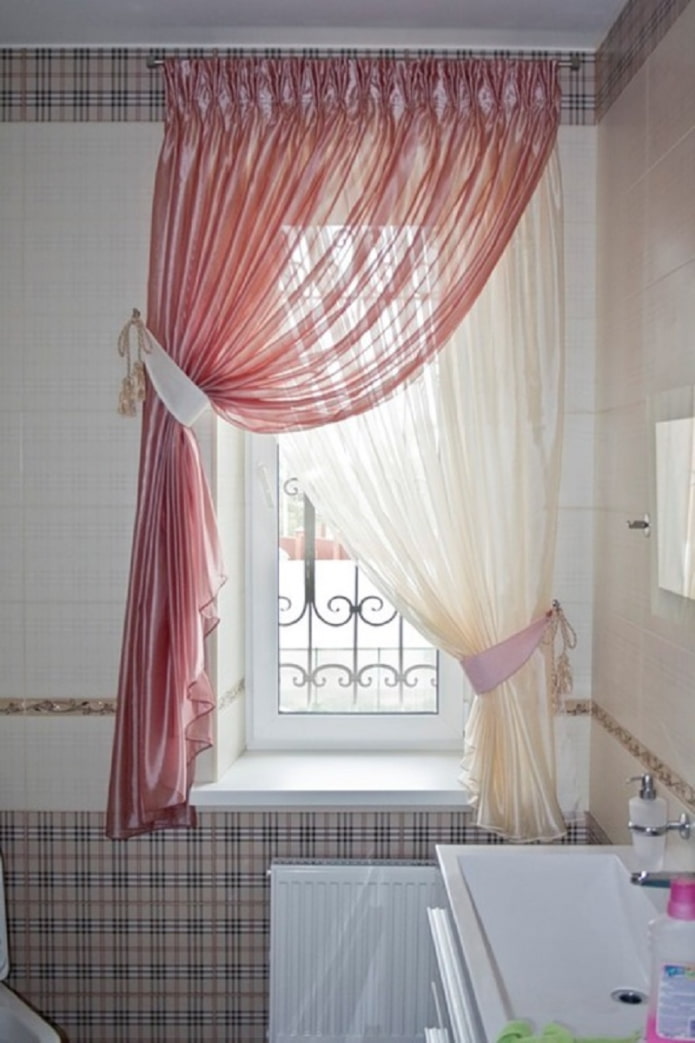
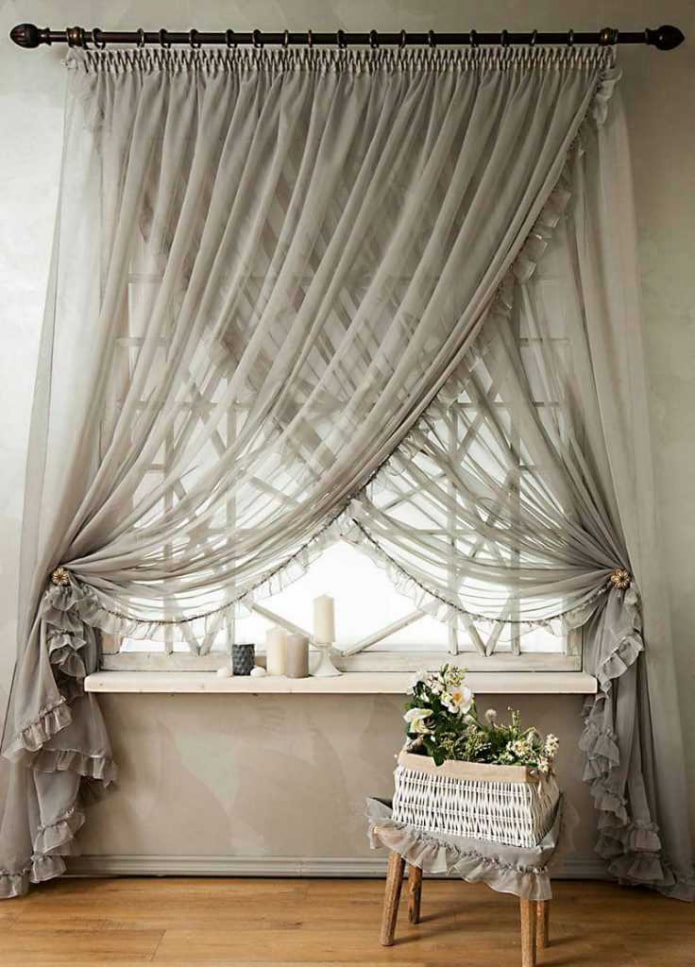


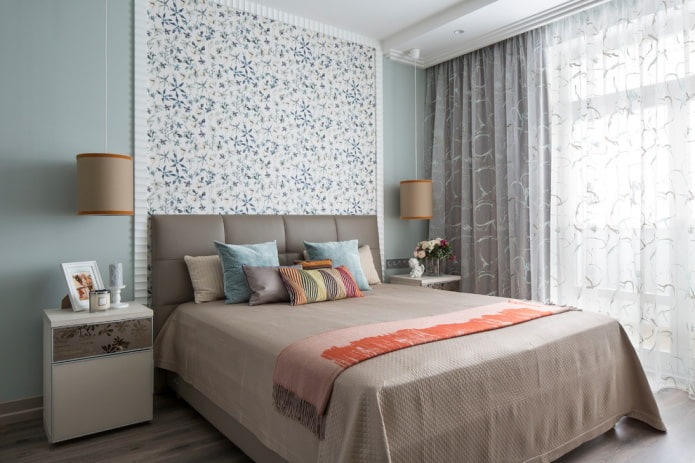
 13 bad habits a good housewife shouldn't have
13 bad habits a good housewife shouldn't have 24/7 home cleanliness - 4 secrets for the perfect housewife
24/7 home cleanliness - 4 secrets for the perfect housewife 6 hotels in Sochi that will give odds to the promoted foreign hotels
6 hotels in Sochi that will give odds to the promoted foreign hotels Top 10 interior design trends 2020
Top 10 interior design trends 2020 Rating of cheap TVs with Smart-TV
Rating of cheap TVs with Smart-TV New Year's LED garlands on AliExpress - we disassemble while it's hot, so that it's bright at home
New Year's LED garlands on AliExpress - we disassemble while it's hot, so that it's bright at home